
The majority of the rooms I visited were playing vinyl or tape per my assignment. That little fact may have added to my belief that RMAF 2013 had the best overall sound I’ve experienced at this event.
Exhibitors have a difficult task with a show like this. They are displaying their products directly to the public for that all too important first impression, and sometimes the rooms don’t always cooperate with the equipment, leading to less than stellar sound. With that in mind, it’s always wiser for any attendee to observe but not make a final judgment about a product based on one showing. If possible, a demonstration in a friendlier environment is always a recommendation.
Continuing on with the analog products displayed, Sutherland Engineering passively showed the internals of its new DUO phonostage. The Duo is truly two individually self-contained mono units. It offers loading (47.5k, 1k, 475, 200, and 100 ohms) and gain (40dB to 64dB in 6dB steps) adjustments via high-quality internal jumpers. There is a clean and well-thought-out flow of signal traces on the 1/8”-thick printed circuit board, a healthy amount of cascaded RC filtering of DC power to reduce AC ripple across the frequency band, and an elegant component layout that includes physical isolation from the AC power input.
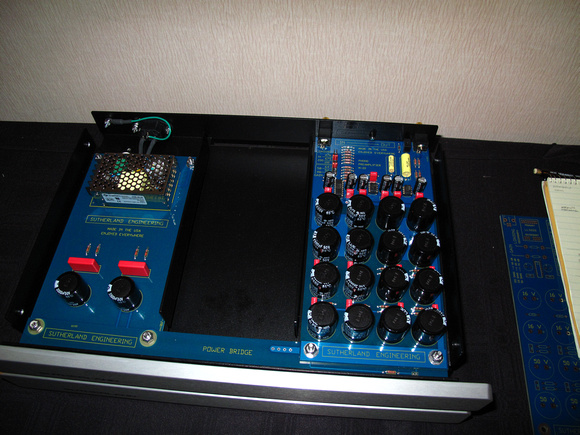
Sutherland Engineering wasn’t just showing passively. Its active display comprised the Merrill-Williams REAL 101 turntable with Tri-Planar arm and Lyra Delos cartridge, the Sutherland N1 (with built-in phonostage, noise generator for burn-in, and Nixie-tubed display panel), the Power Block 200W ICE powered amplifiers, Avalon Transcendent Speakers, Krolo Design Tomo rack, and EnKlein cables. The system made excellent sound with a light, airy, speedy presentation.
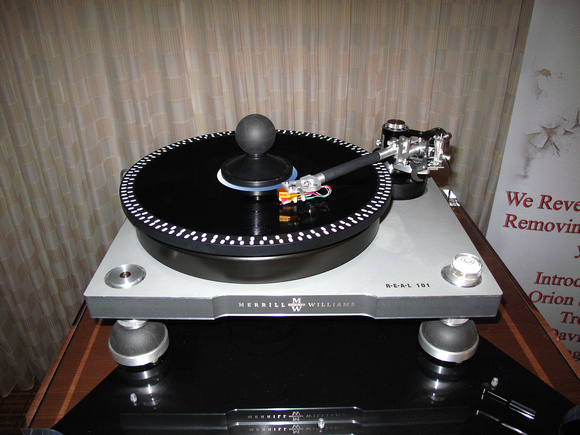
Greg Baron of United Home Audio was showing the UHA Phase 11 tape deck in two rooms at the show. Having listened to this deck on several locations in the past I was fully aware of what was possible with this machine and an excellent source tape. There is an ease to tape playback that is at once inviting and propulsive, sometimes shockingly so, and this UHA Phase 11 deck is a no-fuss, no-worry solution for tape playback that can boogie.
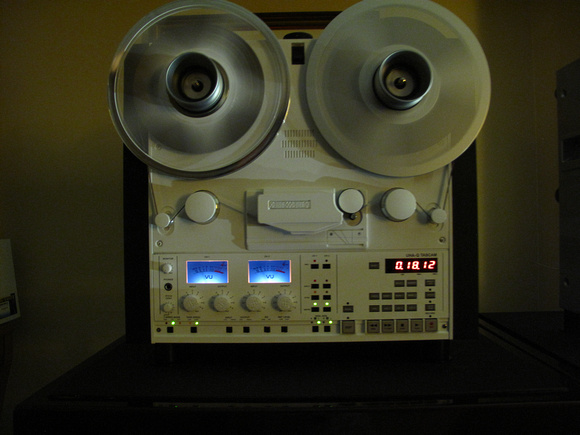
Two UHA Phase 11 decks provided the analog source for a suite of Constellation Performance Series electronics, sitting on Critical Mass stands, driving Von Schweikert Audio’s highly adjustable VR-100 XS Universe speaker system. At the time I entered the room, a Concord record-label sampler tape was playing. I listened to three of the tracks. (I happen to have the complete works in my LP collection.) The sound was pleasant to listen to at the low levels used during my first visit. A short Friday evening visit after hours is where the volume level went up and we got our rock on! The combination played a bit forward and was played at a louder level than anyone I know would ever want to listen at; nonetheless, it seemed to keep its composure with this music for the most part.
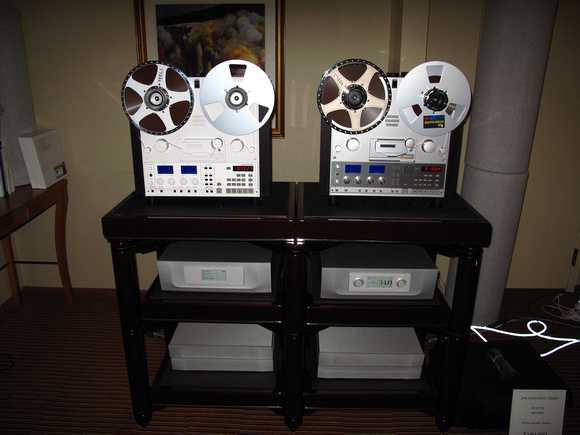
In the MBL room, the UHA Phase 11 tape deck was being shown with the Corona Line of components in what MBL calls Configuration D. This is a configuration consisting of the mbl C31 CD player, mbl C11 preamplifier, mbl C15 mono amplifiers, and mbl 116 F speakers. In this system the UHA deck took on a different sound. The stage was wider and more distant, and the presentation was less aggressive with rock music. This system played very well even at higher levels. I could still “rock out” but the sound didn’t approach any level of discomfort at those high SPLs. I could have stayed in the MBL room longer and listened to the whole tape but duty called.
Need to store your records somewhere other than the floor? The quick way to do this for some folks is to go with IKEA’s Expedit shelves. However, if you want something a bit more appealing then Woodworking Solutions’ Recordphile LP storage cabinets may be exactly what you are looking for. According to Don Ells, the owner, each cabinet drawer holds approximately 100 LPs and has an adjustable back-stop (as seen in the picture below). The available veneers are cherry, oak, walnut, and maple. The cost is $1695 for the two-drawer and $2695 for the four-drawer units. Ellis can even make custom record storage cabinets for those who would like to have an exclusive solution.
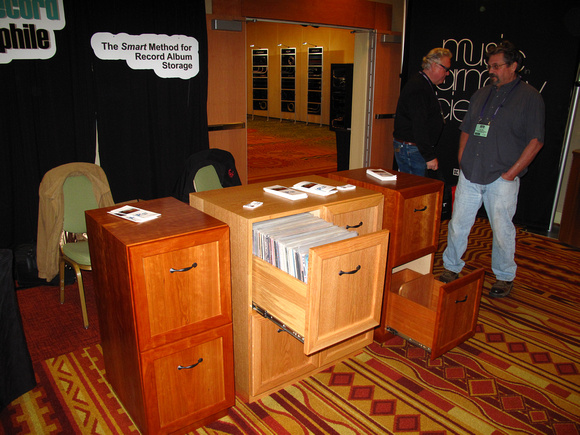
Kronos Audio was showing with Veloce electronics , YG Acoustics speakers, and Kubala-Sosna cables. Mark Conti of Veloce Audio promised to send me an equipment listing, but it hasn’t arrived a week after the show, so this is it for system particulars. I did speak with the designer of the Kronos ($32,000) turntable, Louis Desjardins, who explained the functionality of the suspended isolation, upgraded motor controller, dual-bearing, counter-rotating, dual-platter, torsional-force-reducing turntable, as well as the custom tonearm gracing the table. The name of the tonearm is the Black Beauty and sitting at its tip was the Lyra Atlas. The sound in this room was quick, light, and speedy. There was plenty of upper-frequency air with less bottom-octave energy. Nevertheless, the Kronos delivered excellent drive to the music. In addition to the currently available Kronos turntable, the company will be introducing a new turntable called the Sparta (est. $16,000) that will use the same design concept of counter-rotating dual platters but in a more streamlined single-plinth chassis.
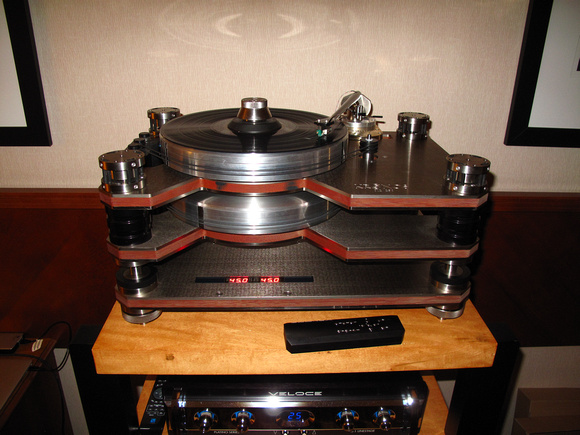
HiFi Imports showed the Thrax Audio Orpheus phonostage (a dual-tube, zero-feedback, LCR design), Dionysos preamplifier, Heros hybrid tube/FET mono amplifiers, and Maximinus DAC (not listened to). The turntable was a Spiral Groove SG1.1 with Graham Phantom II and Transfiguration Orpheus cartridge. The Venture Grand Ultimate MKII Speakers rounded out the system with Enklein cables throughout. I listened to three LPs in this room and enjoyed the sound. The bass was full; piano had nice sustain and development; woodwinds floated in space; organs and guitar harmonics were presented coherently. Overall, the system seemed to lean towards the warm side of this man’s neutral. In the context of this system, the Orpheus phonostage performed very well. I think this is the best sound HiFi Imports has put together for an RMAF show.
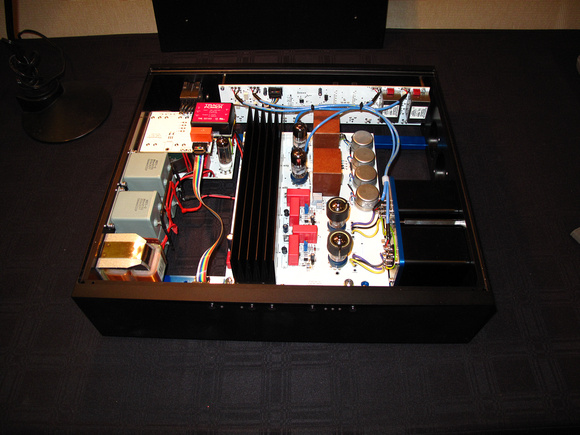
The Hartvig TT Signature turntable with battery power supply was playing in the busy Aaudio Imports room. Aaudio also had a full set of Ypsilon electronics (VPS-100 phonostage, MC10L step-up transformer, PST-100 MKII valve preamp, DAC-100 valve DAC, CDT-100 CD transport/player, and SET100 mono amps—totaling $249,000), Tandem racks and couplers, another ’table (the Thales TTT Compact with Simplicity ’arm), Stage III cables, HB Cable Design PowerSlave Mable power distributer, and the Lanche No.8.2 loudspeakers in the room. The sound produced by this system with the volume raised was big, soft, and warm. The soundstage was huge, as expected, given the distance the speakers were set apart and the size of the room. The presentation was very smooth and comforting with no etch or grain.
XactAudio upped the ante this year with a new Signature version of Kodo’s The Beat turntable, Schröder LT tonearm, Lyra Atlas cartridge, Allnic H3000 phonostage, Signature editions of the Absolare Passion Preamplifier and Passion 845 mono amplifiers, Rockport Avior loudspeakers, and Echole cables. What was most interesting to me (given the high-caliber ancillary equipment) was the analog front end. The Signature version of The Beat contains no less than 28 Stillpoints. Other features include separate platforms for the machined-brass motor mount, above-and-below damping of the armboard platform, a new main bearing with a completely isolated direct drain path to an external Stillpoints Ultra 5 in the center of the plinth. Paraphrasing the designer and distributer, the Schröder LT is a pivoted linear-tracking tonearm that is said to have the advantages of a standard linear-tracking arm without the added side loading of the cantilever effects of such designs. It has lower horizontal mass, low bearing friction in the horizontal plane, and zero friction/stiction in the vertical plane allowing linear-tracking virtues with the rigidity of a preloaded ball-bearing design. The Schröder LT also features adjustable VTA/SRA, fine-tunable VTF, adjustable azimuth, and adjustable effective mass (based on cartridge-mounting-plate selection). The wood choices are handmade snakewood or grenadill extensively treated to be immune to changes in humidity or temperature. As far as the sound in the room goes, it was beautiful, sweet, delicate, light, and airy. The bass was slightly soft in amplitude on one of my LPs, which worked well with the room to allow other details to emerge. This exhibit was, by far the best sound XactAudio has had at the Rocky Mountain Audio Fest that I can remember.
Zesto Audio had a complete set of electronics for this years’ RMAF. It showed the Andros PS1 phonostage, Lento preamplifier, and newly introduced Bia 120 Class A stereo power amp. The rest of the analog chain included a Merrill-Williams REAL 101 turntable with Tri-Planar tonearm and Dynavector XX2 MKII cartridge. The cables were all WyWire in addition to a WyWire/Daedalus AC power distributor. The equipment rack was Steve Blinn Designs with Acoustimac treatments in the room. The speakers were the TAD Evolution One. I spent a little more time in this room due to past listening experience at RMAF. At previous shows, the Zesto sound has been mostly neutral-to-warm. This year, the sonics were different. They moved up the scale a bit towards the leaner side of neutral. I played a few of my own LPs and noticed that most of the music had a slightly lighter quality to it. In some ways this was very enjoyable. For instance the guitars on a number of my LPs had enough transient speed to make their initial attacks sound very real. Eva Cassidy’s voice also sounded very close, intimate, and involving. I suspect that in order to alleviate room interaction in the low bass, the speakers were set up differently and the lighter-side-of-neutral sound was the result. I think the choice for setup of the speaker and the turntable adjustments were a good compromise overall. They proved two things, IMO: Zesto electronics are more resolving than I’d previously thought on the basis of past RMAF displays, and some effort with speaker/ turntable setup is important to getting the sound desired. George Counnas even played Ray Brown’s Soular Energy for me. Anyone with a full-range system knows that this recording has an overabundance of bass but still sounds really good. Well on the Zesto rig as set up this year, Ray Brown’s bass sounded as if less generously heavy hands were at the bass microphone controls. It seems to me that there was more transparency to these electronics than they’d previously displayed.
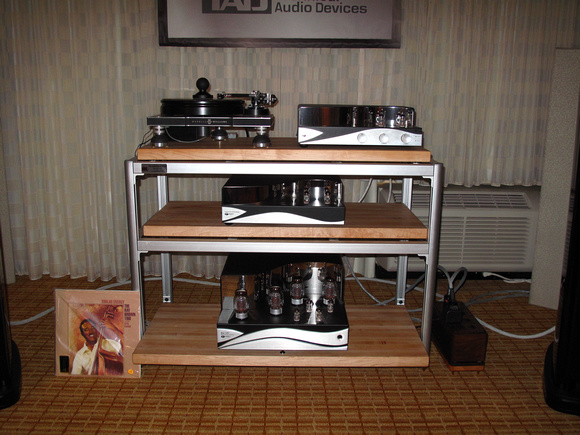
Andre’s best sound of show?
I’m going to copout and go with the live performances of Fan-Ya Lin, Doug MacLeod, and Lillian Boutte. Why? Because it doesn’t take any effort to compare it to the real thing; it is the real thing. What’s interesting to me is the idea of suspending belief and trying to think of what you are hearing as being a stereo system rather than the real thing. You have to close your eyes for that one. I’m pretty sure that if I had blindfolded a bunch of audiophiles/music lovers, asked them to comment on the sound they were hearing, they would come up with all sorts of problems with the music and ways in which it didn’t sound real. And we wonder why it is hard to suspend disbelief with our stereo systems…

By Andre Jennings
My professional career has spanned 30+ years in electronics engineering. Some of the interesting products I’ve been involved with include Cellular Digital Packet Data modems, automotive ignition-interlock systems, military force protection/communications systems, and thrust-vector controls for space launch vehicles.
More articles from this editorRead Next From Show
See all
AXPONA 2024: Jeff Wilson on Music
- Apr 22, 2024

Who Were The Stand-Outs? | AXPONA 2024 Show Report
- Apr 20, 2024

AXPONA 2024: Robert Harley on Electronics
- Apr 19, 2024



















